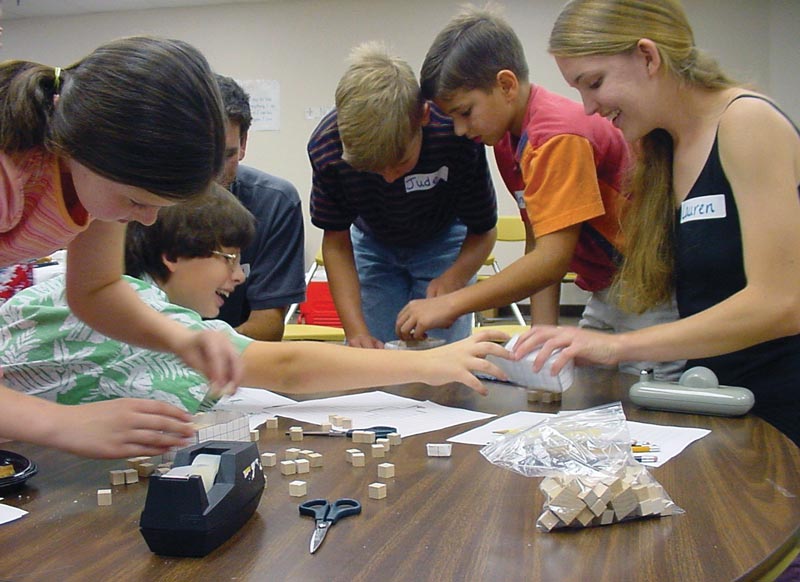Roaches & Foam
Fall
2013
Special Feature
Roaches & Foam
Learning a New Way to Teach Through an Internship
By:Lauren Zarandona, 2002 SPS intern

When I was a rising senior at Rhodes College in Memphis, TN, I ran a mentoring program and coached a MATHCOUNTS team at a local elementary school. My experiences at the school sparked my curiosity about how federal and state educational policies that directly impact curricula are developed. So I applied for an SPS internship in 2002 as a means of satisfying my curiosity.
In the end, I left with more questions than answers. . . and a strong desire to teach.
Memorable experiences filled my summer in DC. I traveled to Capitol Hill for a policy hearing. I learned the ins and outs of SPS. I ran on the National Mall at sunrise every morning. I survived the subway system called the Metro.
The single most compelling experience of my internship took me by surprise. Working with the other summer intern, whose name was Jason, I had finished developing several of the activities for that year’s SOCK. (See p. 8 for this year’s intern-developed SOCK!) We had the opportunity to test two of the activities on a small group of older elementary students. I don't remember where we taught them or even where they came from; it was the middle of summer and students were definitely on break. But I do remember what we taught them and, more importantly, how we taught them. Those were the aspects of the experience that caused me to enter the teaching profession.
For the first lesson, Jason and I carved polyhedra and other three-dimensional shapes out of foam pool noodles and construction foam using an electric carving knife. The finished products were not beautiful, but they were functional. The students at the practice lesson counted the shapes’ edges, faces, and vertices, compiling the data into a chart. Patterns existed throughout the data. Gary White, the SPS director at the time, gave me and Jason specific instructions: let the students grapple with the patterns and then write down their observations on the board, labeling observations with student names.
For the second lesson, we showed a clip from "Men in Black" featuring an alien roach. Using scissors, graph paper, and blocks, students constructed “roaches.” For each roach built, they measured length, surface area, and volume. Finally, we used the data to draw conclusions about the possibility that the roach could even exist.
What we taught stood out to me because both lessons applied grade-appropriate math in engaging problem-solving contexts. The students in the room enjoyed doing the math, even in the middle of the summer, because it was interesting. How we taught the lessons changed my view of teaching. I had grown up in very teacher-centered classrooms. The lessons that we taught let the students take charge of their learning through conjecture, observations, and discussion.
I entered my senior year of college determined to become a teacher with hopes of ultimately becoming a district curriculum coordinator. Ten years into my teaching career in Mississippi, I have no plans to pursue administration. Instead, I train middle school teachers every summer. I often use both the polyhedra lesson and the roach problem. I always choose lessons in which the students are responsible for their own learning, modeling the methods I first learned as an SPS intern. //
More Information
For more information about Lauren's experience as an SPS intern, visit her intern page at www.spsnational.org/programs/internships/2002/glas.htm.
